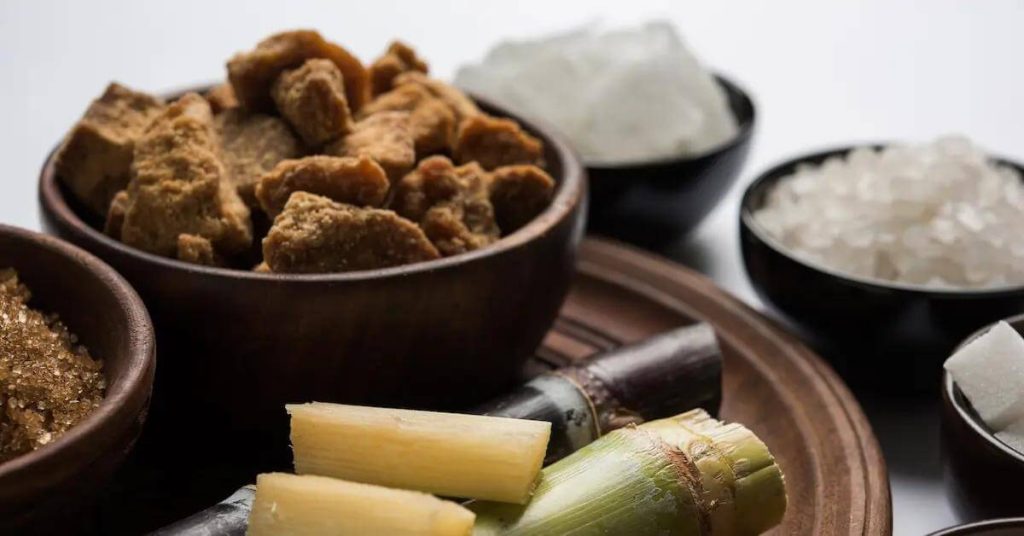Understanding Cane Sugar Processing: A Comprehensive Overview of the Stages
Understanding Cane Sugar Processing: A Comprehensive Overview of the Stages
Blog Article
An Extensive Guide to the Ecological Impact and Sustainability Practices in Walking Cane Sugar Processing
The ecological influence of walking cane sugar processing offers a complex variety of difficulties that warrant cautious evaluation. From dirt degradation and too much water usage to the carbon footprint connected with farming and manufacturing, the effects of traditional techniques are far-ranging. On the other hand, the adoption of ingenious sustainability steps supplies a pathway toward more responsible production techniques. Recognizing the interplay between these concerns is critical for stakeholders in the market. What particular practices can be applied to strike a balance in between productivity and ecological stewardship? The responses hinge on a better look at both the challenges and prospective services.
Review of Cane Sugar Handling
Walking cane sugar processing includes a collection of organized steps that change sugarcane into polished sugar. At first, collected sugarcane is transferred to processing facilities, where it goes through cleansing to remove dirt and debris. Following this, the walking stick is squashed to remove juice, which is after that cleared up by eliminating impurities with heating and the enhancement of lime.
The made clear juice undertakes dissipation, where water is removed to focus the sugar content. This concentrated syrup is then crystallized via air conditioning, permitting sugar crystals to form. These crystals are divided from the continuing to be syrup using centrifugation, leading to raw sugar. To achieve refined sugar, the raw item undertakes additional filtration processes, which may include washing and filtering to eliminate staying contaminations and color.
The end product is then dried and packaged for distribution. Throughout this whole process, keeping performance and high quality control is important to make sure the sugar meets market requirements. Each action in cane sugar handling not just adds to the final product however also has implications for resource usage and waste generation, setting the stage for discussions on sustainability and environmental effects connected with sugar manufacturing.
Ecological Difficulties of Manufacturing
The production of walking cane sugar presents a number of significant environmental obstacles that warrant interest. One main problem is the extensive usage of agrochemicals, including fertilizers and chemicals, which can result in dirt destruction, biodiversity loss, and contamination of neighborhood water sources. The drainage from sugarcane fields usually brings these chemicals into close-by ecosystems, interfering with water life and influencing the health and wellness of communities reliant on these water bodies.
Another difficulty is the high power usage connected with sugarcane handling. The boiling and refining phases need considerable warmth, mainly produced by burning nonrenewable fuel sources, adding to greenhouse gas discharges. In addition, the expansive land location required for sugarcane cultivation can lead to deforestation and habitat devastation, additional worsening environment adjustment and harmful wildlife.
Additionally, the labor techniques in some regions increase ethical issues, as employees might face bad working problems and poor wages. This scenario typically bolsters a cycle of poverty in neighborhood areas. Cane Sugar Processing. Addressing these ecological challenges is important for creating much more sustainable methods in cane sugar manufacturing, inevitably profiting both the atmosphere and the neighborhoods involved in this industry
Water and Land Usage Influence
Water resources and land application are essential elements in the walking cane sugar market that considerably impact the setting. The growing of sugarcane needs substantial water input, with estimates recommending that it can consume as much as 2,000 litres of water per kilogram of sugar produced. This extensive use water typically results in depletion of neighborhood water resources, influencing not only the sugarcane plantations however likewise surrounding environments and communities that rely upon the same water sources for these details farming and residential use.

Moreover, land usage for sugarcane cultivation can lead to logging and the conversion of all-natural environments into monoculture vineyards. This technique decreases biodiversity, disrupts neighborhood communities, and adds to soil destruction. The development of sugarcane areas often elbows in on important farming land, creating competitors for resources between food and biofuel manufacturing.
Sustainable techniques, such as maximizing watering methods and applying crop turning, are vital to reduce these effects. By taking on a lot more reliable water usage and land administration methods, the walking stick sugar market can minimize its ecological footprint, ensuring an equilibrium in between farming productivity and environmental conservation.
Greenhouse Gas Emissions
Greenhouse gas emissions stand for a substantial ecological concern within the walking cane sugar processing industry, specifically as agricultural methods broaden to meet international demand. The growing of sugarcane, a plant that flourishes in exotic environments, depends greatly on artificial plant foods and pesticides, which add to laughing gas exhausts. Additionally, land-use modifications, including deforestation for brand-new sugarcane plantations, release carbon dioxide stored in plants and soil.
Throughout handling, energy intake is one more major source of greenhouse gas emissions - Cane Sugar Processing. Lots of sugar mills utilize fossil gas to power equipment and produce warmth, resulting in significant carbon impacts. Moreover, the transport of raw sugarcane and completed items includes layers of exhausts via gas combustion in lorries
The collective impact of these exhausts worsens environment adjustment, posing risks not only to the atmosphere however also to the long-lasting practicality of the market. Stakeholders need to recognize the immediate requirement for extensive methods that resolve these emissions. This entails reviewing existing farming techniques, processing methods, and transport systems to determine locations for renovation and mitigation. Addressing greenhouse gas exhausts is important for their explanation promoting a much more sustainable cane sugar sector in a changing environment.

Lasting Practices and Innovations
Sustainable methods and developments are significantly crucial in the cane sugar handling sector as stakeholders look for to lower ecological influences while maintaining efficiency. One considerable advancement is the implementation of incorporated crop management, which enhances source usage by integrating soil monitoring, insect control, and plant turning strategies. This approach enhances yield while decreasing chemical inputs and preserving dirt health and wellness.
In addition, the fostering of eco-friendly energy sources, such as biomass from sugarcane residues, has actually gotten grip - Cane Sugar Processing. By converting waste items into power, processing centers can lower their dependence on fossil fuels, consequently reducing greenhouse gas discharges
Water management practices have additionally seen enhancements with the recycling and reusing of water in handling plants, substantially minimizing freshwater usage. Developments Read More Here in innovation, such as precision farming, allow farmers to keep an eye on crop health and wellness and resource usage better, guaranteeing sustainable farming practices.
In addition, qualification programs like Fair Trade and Rain forest Alliance motivate eco responsible farming practices and promote social equity within the supply chain. By welcoming these lasting methods and technologies, the walking cane sugar processing sector can boost its strength and contribute positively to ecological stewardship.
Verdict
The environmental influence of walking stick sugar handling offers significant challenges, consisting of soil deterioration, high water intake, and greenhouse gas exhausts, along with honest worries connected to labor techniques. Resolving these problems through lasting techniques, such as integrated plant administration, eco-friendly energy fostering, and water recycling, is vital. By advertising eco accountable and socially equitable approaches in sugar manufacturing, the sector can alleviate its adverse effects, guaranteeing a more sustainable future for both neighborhoods and ecosystems involved in this market.
Walking cane sugar processing includes a series of systematic actions that change sugarcane right into polished sugar. Each step in walking stick sugar processing not just contributes to the final item yet likewise has implications for source use and waste generation, establishing the phase for discussions on sustainability and ecological effects associated with sugar production.
Greenhouse gas discharges represent a considerable environmental issue within the walking cane sugar processing market, especially as agricultural methods increase to fulfill worldwide demand.Lasting practices and innovations are progressively important in the cane sugar processing industry as stakeholders seek to lower ecological impacts while maintaining performance.The environmental effect of walking cane sugar handling provides considerable obstacles, including dirt deterioration, high water usage, and greenhouse gas emissions, alongside moral issues connected to labor methods.
Report this page